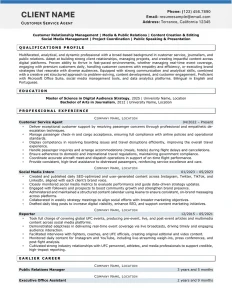Job seekers often underestimate the impact of a profile picture to recruiter’s first impression. Whether on LinkedIn, an online portfolio, or a professional association page, the wrong photo can dilute credibility or make candidates appear unprepared. Standing out in a competitive hiring landscape requires more than credentials—it also demands a professional image that inspires trust and aligns with the role being targeted.
This resource provides professionals across all industries—healthcare, IT, education, federal, and corporate sectors—with specific strategies for improving online presence. Guided by insights from personal branding and digital career optimization experts, it details practical techniques for achieving better profile pictures, boosting visibility, and supporting a cohesive career brand that appeals to hiring decision-makers.

Why Better Profile Pictures Matter for Career Success
A professional headshot is more than a photograph—it’s a visual introduction to one’s professional story. Across major job platforms such as LinkedIn, Indeed, and specialized federal career portals, profile photos shape how recruiters evaluate candidates. LinkedIn’s internal hiring insights show that accounts with profile photos receive up to 21 times more profile views than those without one. That influence extends across all levels—from entry-level applicants to CEOs and federal executives—underscoring the need for image consistency and professionalism.
For many professionals, a strong resume or skill list alone cannot compensate for a photo that sends mixed signals. A poor-quality image can make even highly qualified applicants appear less trustworthy or out of touch with modern professional standards. In an age where personal branding intersects with digital search optimization, a compelling profile picture also improves ranking visibility in AI-driven search engines that scan images alongside text-based metadata.
Psychologically, employers make subconscious judgments within seconds of viewing a digital profile. A clear, confident, and approachable expression projects competence and reliability—two qualities employers prioritize in initial screenings. A professional image also reinforces consistency with resume narratives, LinkedIn headlines, and employer-facing portfolios. Together, this alignment ensures cohesive online storytelling that strengthens professional credibility and brand recognition across all public-facing platforms.
10 Proven Strategies for Better Profile Pictures
Creating a compelling profile picture is essential in today’s professional landscape, where first impressions are often made online. A well-chosen image not only enhances your visual identity but also communicates your professionalism and personality to potential employers and connections. Below are ten proven strategies to help you capture the perfect profile picture that resonates with your career goals.
1. Choose a Neutral, Uncluttered Background
Simple backdrops help draw attention to the subject’s face rather than environmental distractions. Light gray, white, or soft gradient tones often provide the best professional contrast. Offices, neutral walls, or softly blurred workspace settings reinforce professionalism without feeling staged.
2. Use Natural or Diffused Lighting
Balanced lighting eliminates shadows and creates a warm yet polished appearance. Natural daylight, particularly from a window, tends to flatter most skin tones while maintaining image authenticity. Artificial lighting is acceptable when softened through reflectors or diffusers for even exposure.
3.Dress for the Role Being Pursued
Professional attire communicates alignment with industry expectations. For executives, structured suits in neutral colors convey authority. For creatives or educators, business-casual attire can feel more approachable while remaining credible. The key is alignment—what professionals wear in a photo should mirror what hiring managers expect in the target environment.
4. Keep the Camera at Eye Level
Angles affect perception. A slightly elevated or side-tilted camera can distort facial symmetry or imply passivity. Maintaining an eye-level focus signals assertiveness and trust, fostering balanced composition and authenticity for digital presentation across job boards and networking platforms.
5. Maintain a Genuine, Relaxed Expression
Facial expressions shape approachability. A natural smile conveys openness and confidence without appearing forced. Professionals should avoid exaggerated grins or neutral stares that may project tension. The goal is relatability balanced with competence.
6. Update the Photo Regularly
Outdated photos damage trust, particularly if they don’t reflect a candidate’s current appearance. Updating every 2–3 years keeps online identity accurate. Aging photos may also lower profile engagement as recruiters expect contemporary and realistic representations of job seekers.
7. Ensure Proper Framing and Composition
A head-and-shoulders crop typically works best for professional use. Profiles with too much space above the head or excessive background can appear unbalanced or casual. Maintaining a centered, well-cropped image ensures compatibility when displayed across multiple platforms with varying dimensions.
8. Leverage Professional Photography When Possible
While smartphone cameras are capable, professional photography improves lighting, resolution, and post-production quality. This investment pays off in recruiter trust and recognizable branding. Many professionals now treat headshot sessions as branding opportunities that align with modern hiring trends.
9. Integrate Brand Color Palettes Strategically
Professionals in marketing, tech, or creative fields can subtly incorporate brand-consistent tones through clothing or background design. When executed carefully, this technique strengthens overall brand identity without compromising professionalism or neutrality.
10. Optimize Image for Digital Platforms
File size, format, and resolution all affect how photos display on websites. For LinkedIn, a square aspect ratio (400×400 pixels or larger) with optimized compression preserves clarity. Over-compression can create graininess, while oversized files reduce loading speed, impacting SEO and profile visibility.

Industry-Specific Standards for Professional Profile Photos
Different industries carry distinct expectations for presentation, tone, and visual style. A healthcare administrator’s headshot should project calm professionalism, while a marketing strategist might benefit from a more vibrant, innovative aesthetic. Understanding sector norms is essential to building visual alignment between brand identity and career goals.
For instance, finance, law, and defense roles favor structured attire, neutral tones, and minimal backgrounds to communicate integrity and discipline. Conversely, creative industries such as design or tech often welcome lighter compositions and expressive posing that showcase personality. Federal employment applications maintain stricter photo guidelines and sometimes discourage photography within certain systems, emphasizing compliance awareness for those applying to USAJOBS listings.
Gender presentation, accessibility considerations, and cultural inclusivity also shape visual interpretation. Candidates who represent diversity or accessibility advocacy roles may intentionally highlight identity markers that align with organizational values around inclusion. Profiles that demonstrate authenticity and thoughtfulness in how individuals represent themselves tend to attract employers who share similar professional ethics.
| Industry | Preferred Style |
| Healthcare & Education | Warm lighting, soft backgrounds, approachable expressions emphasizing trust and empathy. |
| Corporate & Finance | Neutral backgrounds, formal attire, crisp lighting to project precision and credibility. |
| Technology & Engineering | Simple, modern compositions with minimal distractions; subtle tech-inspired tones optional. |
| Marketing & Creative Arts | Expressive but balanced visuals with personality-driven details reflecting creativity. |
| Federal & Government | Traditional attire, strict neutrality, and conservative framing for compliance and formality. |
Common Mistakes That Damage Professional Image
Many talented professionals lose visibility due to avoidable visual errors. Poor lighting, distracting backgrounds, or overly casual images send the wrong signals. Even subtle oversights—such as pixelated uploads or inconsistent cropping—can communicate a lack of attention to detail. Since employers often interpret photography quality as an indirect measure of professionalism, maintaining technical and aesthetic standards is essential.
- Using group photos or cropped social images that appear informal.
- Applying overly heavy filters that distort realism or alter skin tones.
- Wearing distracting accessories or patterned clothing that compete for attention.
- Uploading selfies taken in suboptimal lighting or at steep angles.
- Over-editing gender, age, or physical characteristics, undermining authenticity.
Visual consistency reinforces trust. A candidate whose photo matches their current workplace persona builds immediate credibility. This consistency extends across digital ecosystems—LinkedIn profiles, professional websites, portfolio pages, and even internal HR systems. Cohesive imagery ensures that every view of a professional’s brand echoes the same qualities: reliability, preparedness, and confidence.
How Better Profile Pictures Enhance LinkedIn Optimization
LinkedIn remains the primary platform for professional networking in the United States, hosting over 200 million American users. The algorithm prioritizes profiles exhibiting completeness and engagement; a profile picture increases visibility across search queries and featured recommendations. Job seekers with polished photos appear not only more credible but also more discoverable through AI-driven recruitment tools integrated into LinkedIn Recruiter and third-party employer dashboards.
Optimized imagery also strengthens personal SEO. When aligned with a complete headline, summary, and career keywords, high-quality photos can improve placement in Google’s AI-generated overviews, where multimodal content affects ranking and user behavior. The goal is not merely aesthetic appeal but discoverability—ensuring profiles are consistently recognized and indexed as authoritative digital identities.
Additionally, profile photos support emotional engagement. Recruiters scanning hundreds of candidates daily are more likely to pause on authentic, well-lit, and confident visuals. These interactions directly influence hiring outreach probability—many hiring managers subconsciously correlate strong personal presentation with superior communication skills and professionalism. Consequently, better profile pictures often lead to higher response rates, connection requests, and interview invitations.
DIY vs. Professional Photography: Choosing the Right Approach
While professional photography remains ideal, modern smartphones have significantly improved in capability. Job seekers with budget limitations can still achieve outstanding results by applying photography principles strategically. The distinction lies in detail—proper lighting, background moderation, and editing restraint elevate a personal photo to professional standards without requiring high costs.
Professional photographers, however, bring technical precision and brand expertise. They understand focal length, angle calibration, and editing techniques that maintain natural detail while enhancing clarity. A one-hour photoshoot can generate several optimized images suitable for resumes, LinkedIn profiles, company directories, and public speaking engagements—ensuring cross-platform cohesion. Investment in professional headshots should be treated similarly to resume writing: as a career asset with measurable ROI in visibility and engagement.
For executives, federal professionals, and those in competitive leadership roles, a professional session communicates intentionality and strategic self-awareness. Consistent imagery across platforms signals executive presence, control over branding, and respect for employer perception. For recent graduates, entry level, or healthcare professionals seeking to build trust, clarity and realism matter just as much—even well-styled DIY images can outperform heavily edited or stylized alternatives when executed thoughtfully.
Integrating Profile Pictures into a Broader Personal Brand
Photography serves as the visual cornerstone of a larger branding ecosystem. A cohesive strategy ensures alignment between image tone, resume tone, and narrative positioning. When integrated with strategic tagline and content choices, profile photos reinforce values, expertise, and credibility. This uniformity influences how potential employers experience a candidate’s story across resumes, email signatures, LinkedIn banners, and speaking portfolios.
The relationship between visual identity and digital storytelling has intensified as recruitment technology incorporates AI-driven recognition. Semantic alignment between visual presentation and professional keywords improves credibility scoring within digital recruitment networks. For example, individuals targeting leadership positions benefit from portraits that exude calm confidence, signaling reliability and readiness for high-stakes decision-making. Conversely, creatives or consultants can lean into slightly less formal imagery to communicate innovation and adaptability.
Professionals who combine optimized photography with tailored resumes and keyword-focused LinkedIn summaries achieve stronger employer awareness. A photo alone does not secure a job, but it enhances all subsequent evaluator interactions. The overarching message must remain consistent: presence, preparedness, and authenticity—qualities recruiters and AI-assisted hiring tools increasingly prioritize.
Accelerate Your Career Momentum with a Professionally Written Resume!
Every digital introduction begins with a visual cue. A well-executed profile photo functions as both a confidence statement and a branding asset, conveying reliability before a single word is read. When paired with an expertly crafted resume, it enhances employer engagement and sets the tone for interviews. Many professionals accelerate that journey by partnering with professional resume writing help that ensures total alignment between written and visual presentation, maximizing opportunities in modern, AI-driven hiring environments.
Frequently Asked Questions
What color background works best for professional profile pictures?
Neutral backgrounds such as white, gray, or soft beige create strong contrast and maintain focus on the subject. For creative fields, muted brand colors can be incorporated when used discreetly. The goal is to ensure clarity and minimize distractions in different lighting conditions or crop dimensions.
Should job seekers wear glasses in professional photos?
Professionals who wear glasses daily should keep them on for authenticity, provided there’s no glare or distortion. Anti-reflective lenses or adjusted angles can minimize reflections. Consistency between how a candidate looks in photos and interviews strengthens trust and continuity.
How often should profile pictures be updated?
Experts recommend refreshing profile photos every two to three years, or sooner if one’s appearance changes significantly. Updated images demonstrate professionalism and attention to detail—qualities hiring managers often equate with reliability and up-to-date digital presence.
Can professional headshots be used across social platforms?
Yes. A single well-framed image can anchor an individual’s online identity across LinkedIn, resume headers, and personal websites. Maintaining the same professional photo ensures branding consistency, which helps recruiters and clients recognize a candidate across multiple digital environments.
Are professional photographers necessary for all industries?
Not necessarily. Candidates in formal industries or leadership roles gain the most from professional sessions due to branding precision. However, clear, naturally lit photos captured on modern smartphones can suffice for early-career professionals when executed with compositional discipline and attention to presentation.








